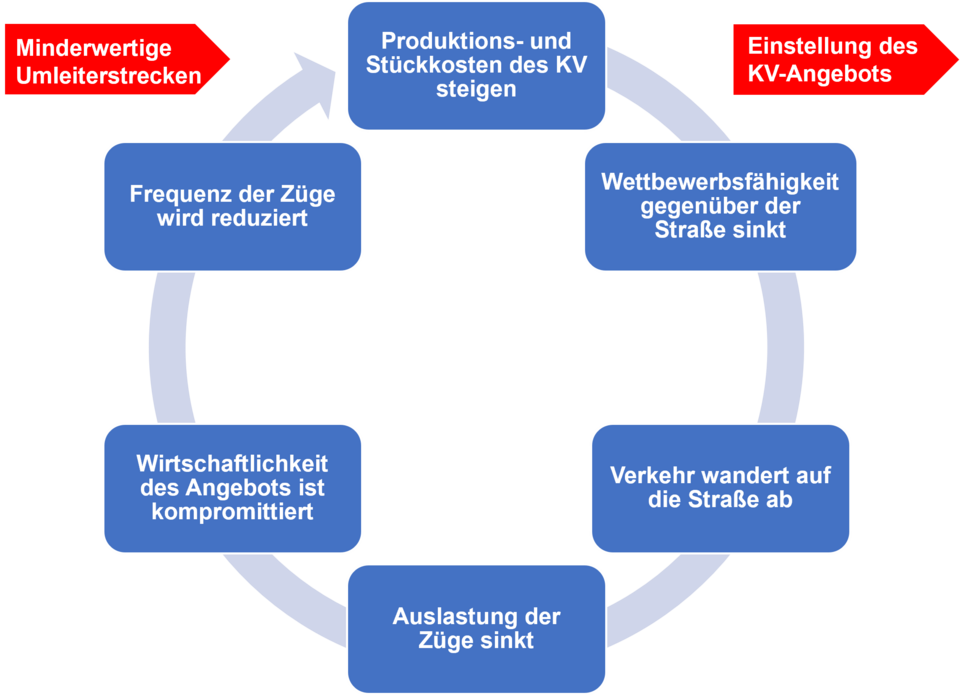We are not discussing the need to renovate the rail network – it is urgently needed.
Nor are we questioning the causes of the network's dilapidated condition – they are well known.
We are talking about the consequences of a concept that shuts down entire corridors for five or more months at a time, without any reliable alternatives being available. This affects everyone: railways, operators, terminals, wagon owners, freight forwarders and logistics companies – and ultimately industry in Germany and Europe.
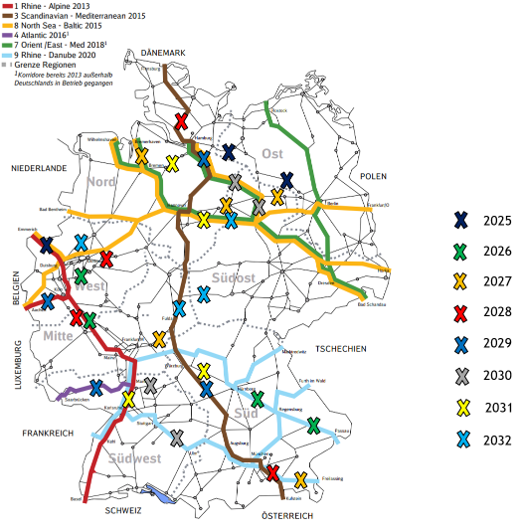
Planned corridor renovations 2026–2032
Reference: Lokomotion GmbH
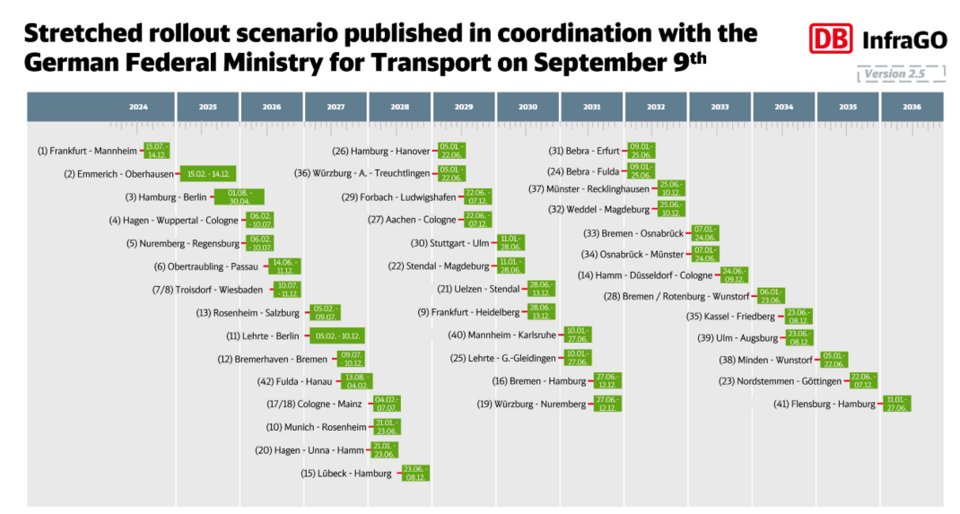
Reference: 4th High-Performance Network Meeting, 2.10.25
Today, combined transport provides enormous benefits for the economy and the environment – despite growing disruptions, bottlenecks and rising costs. However, without reliable framework conditions and functioning diversions, there is a risk of a drastic loss of capacity. The figures show what we are achieving, what we are suffering from today – and what risks will arise tomorrow.
in Germany in 2024
in rail freight transport in Germany in 2024
for routes of Ø 500 km per shipment in the German network
at 0.8 tons of CO₂ per lorry load
at terminal with < 1 hour delay
due to operational reasons
increase compared to 2022
in transalpine traffic in 2028
in the event of corridor closures without equivalent diversion routes
with a 30% volume loss due to the cumulative effect of reduced capacity and rising costs
with a 25 % shift back to road transport
Many of the routes offered are not viable from an operational or economic perspective – and are therefore not a genuine alternative. The two examples below are representative of critical diversion routes in 2026.
- Trains must be shorter, lighter or lower → less capacity.
- Long detours → significantly higher costs.
- Diesel traction, language change or other safety systems → often not operationally feasible.
A diversion route that is not marketable is effectively not a diversion route.
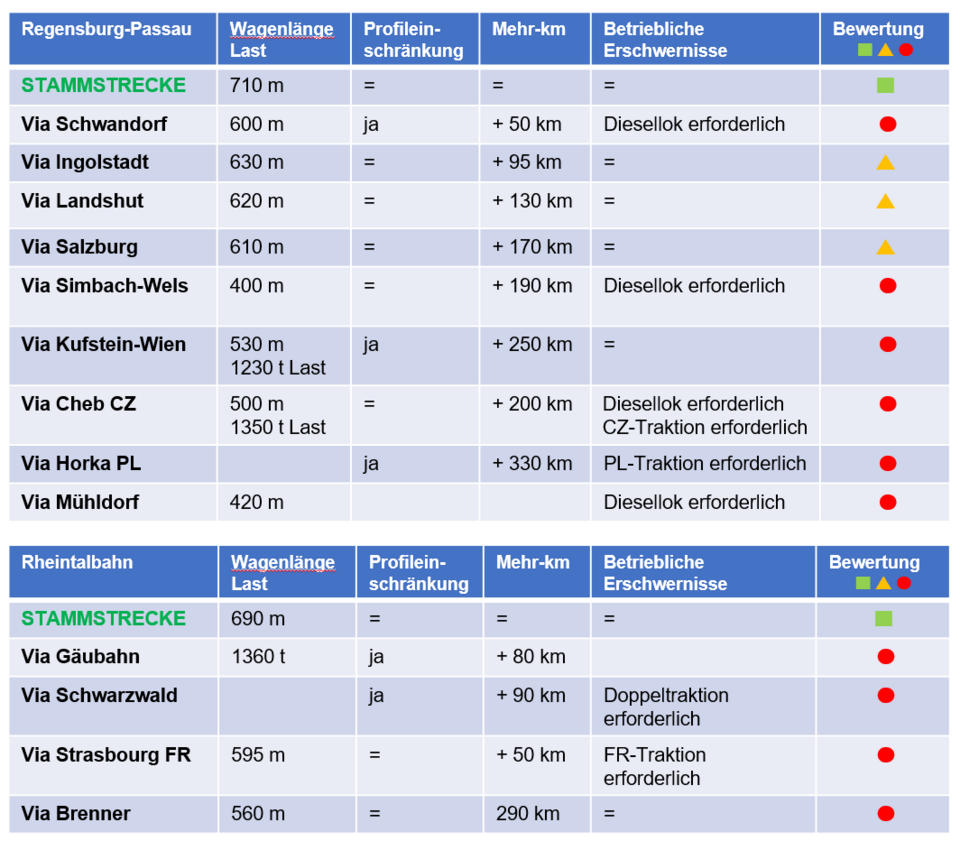
Possible detours Munich – Verona in 2028
- Green connection:
Munich – Holzkirchen – Brenner – Verona
→ only 20 km longer, but shorter trains with 40 to 50% less capacity - Blue connection:
Munich – Passau – Tarvisio – Verona
→ Long detour, adding 500 to 580 extra kilometres
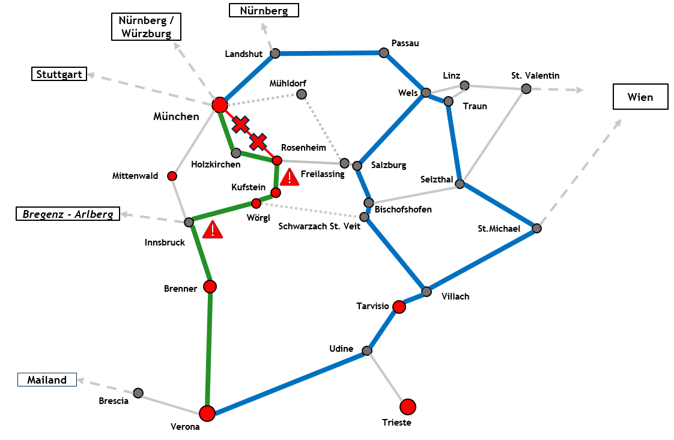
Reference: Lokomotion GmbH
Trains that are 100 metres shorter and 25% fewer train paths may sound abstract, but the effects are not. During a six-month complete closure, our example shows a shortfall in capacity equivalent to 100,000 lorry loads.
What's more, fewer loads are spread across almost the same fixed costs. This means that costs rise by around 14% in mathematical terms – another incentive to shift transport to the roads.
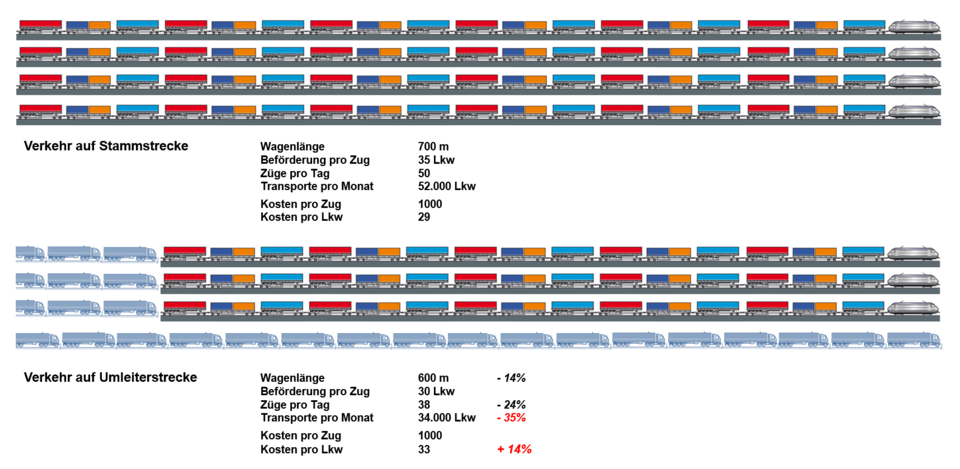
Substandard diversions, rising costs and declining reliability trigger a vicious circle – with long-term consequences for rail.
Transport companies are already investing more in additional resources for road transport – a necessary measure to ensure they can continue to deliver on time. This sets in motion a dangerous mechanism: utilisation and thus the economic efficiency of combined transport services decline, train frequencies have to be reduced, attractiveness continues to decline – and in extreme cases, a connection is discontinued.
And once something has been shifted to the road, it often does not return. This is because capacities are tied up, contracts are adjusted and processes are permanently geared towards road transport.
